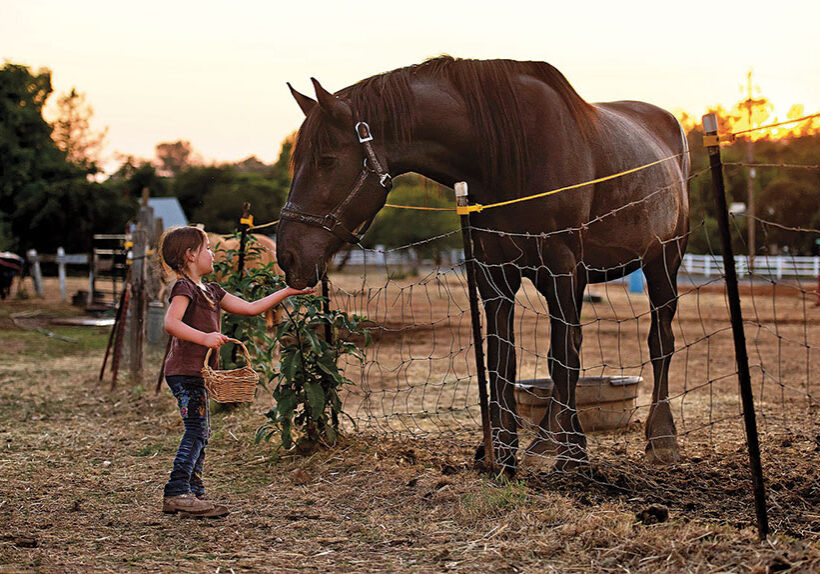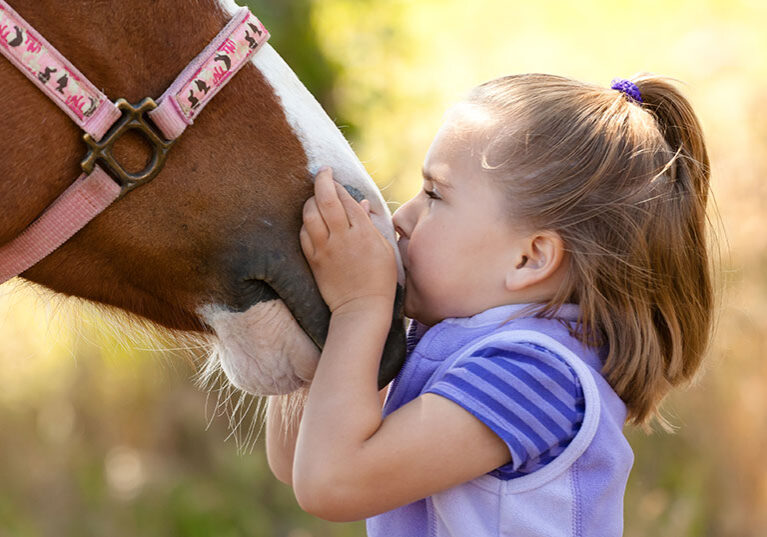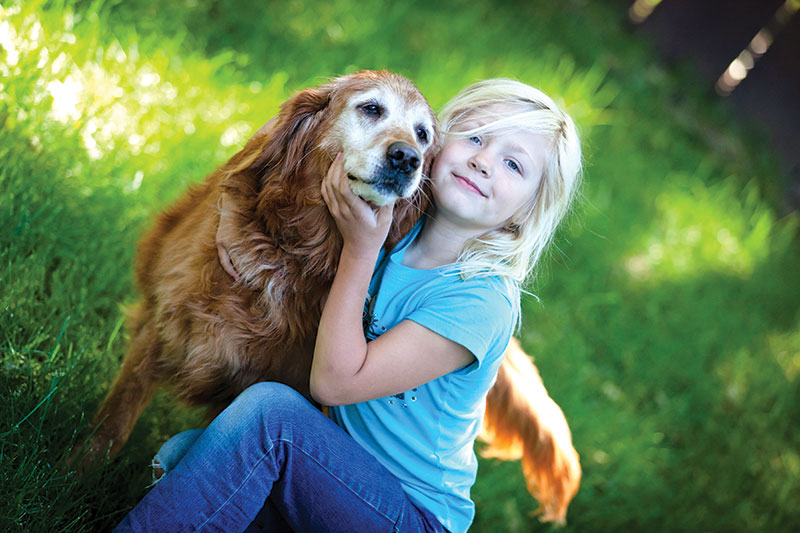

Before deciding to bring a new dog into the family, here are some things to consider:
The Basics
Time and interaction: Dogs need devoted time and interaction with their humans, including time spent exercising, grooming, training, playing, and giving and receiving affection. Feeding, bathroom breaks, and trips to the vet also take time. These activities can be worked into a routine to the benefit of your family–we all need exercise, affection and play! The rewards of a family dog are many; the question is whether your family is ready to handle the additional responsibilities. Dogs become family members, and many live to age 14 or more. Are you willing to make a commitment to the dog for its entire life?
Housing: Where will the dog sleep? Eat? Stay when no one is home? Is there a secure yard where the dog will be safe outdoors? A fenced outdoor area is often a requirement of animal shelters and rescue groups. If your dog will be outside during the day, is there a shaded area? Is there an area where the dog can run free and possibly dig, without ruining a coveted garden?
Costs: Routine veterinary care, quality food, licensing, grooming supplies, dog training, toys and treats all add up. After-hours emergency veterinary care can run from a few hundred to a few thousand dollars for a single procedure or surgery. Pet insurance (an additional monthly expense) can help with emergency costs of non pre-existing conditions, but typically not the entire cost. Get recommendations from other pet owners regarding pet insurance companies, and research and compare policies.
Vacations, job travel, or being gone the majority of the day: Some lucky dogs are able to accompany their families on vacations or to a work environment, but many environments aren’t an option for Fido. You’ll need a plan for making sure your dog gets a bathroom break if the dog spends extended time indoors during the day. For vacations, you may have canine-loving friends who are willing to care for your dog for a period of time, but it’s a good idea to know of alternate plans such as a trusted dog-sitter, boarding, or even doggie daycare.
Local laws concerning dogs: Cities and counties have laws pertaining to dogs, most often regarding licensing, on-leash requirements, dogs at public events, and tying dogs outdoors. Some cities ban particular dog breeds (as do some homeowners associations or landlords). Whether you are in agreement or not with a law philosophically speaking, as a future dog owner you need to be aware of any restrictions. If you know that you may need to relocate down the line, think ahead regarding your future state/city/county’s laws. The last thing you want is to bond with a great dog, and discover that dog isn’t welcome in a location you need to live in.
Remember that your new dog is a member of the family and treat the dog accordingly, just like when you brought your baby home. As to when a family is ready to adopt a dog, I’ve always felt dogs and cats pick their owners. Go into a shelter or rescue with an open mind, meet and talk to all the dogs, and be open to the one that steps up and seems to say, “Hey, it’s time to go home!” It may not be the color or the breed of dog you originally thought you wanted, but that sense of connection makes for a happy long-term relationship.”
Psychological Aspects of a Family Dog
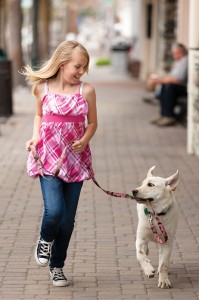

Photo: Living Shasta Photography http://www.livingshastaphotography.com
Dogs are similar to people–they bond with their “pack” (your family, your extended family, and other family pets). Like any new relationship, it takes time for a dog to adjust to its new environment and individual family members.
Training your dog: All dogs can learn basic commands such as “sit,” “stay,” “down,” “wait,” “leave it” and “okay.” These skills are obviously helpful for enhancing your family’s relationship with your dog, but training is also important for safety reasons. For example, when in a vehicle a dog needs to know to wait until given a signal it’s okay to jump out – leaping out the second the door opens could mean leaping into parking lot traffic, or next to a surprised child or another dog, none of which are good situations. Dogs are intelligent, so learning new commands and tricks is enjoyable for most dogs and keeps active dogs challenged. Shelters, rescues or legitimate breeders can refer you to a reputable trainer, and many trainers offer both group and private lessons. Consider training your dog for a “Canine Good Citizenship (CGC)” certificate, showing that your pooch is able to interact successfully in public situations.
Puppy or Adult dog? Consider what age dog is right for your family. Puppies are adorable… and training a puppy requires a tremendous amount of work and patience. It’s like bringing home an active, investigative toddler – one with a tendency to chew furniture and shoes. Research the best way to embark on raising a puppy as a life-long friend. Adult dogs in a new environment may also have accidents and make messes during the “getting to know you” phase. A dog needs time to learn the family routine and to gain confidence in its new environment… and its humans need to learn what to change in the environment, such as moving the hard-to-resist kitchen garbage can to a location the dog can’t get to, or for tall dogs, keeping the butter dish out of sight.
Picking the right animal for your lifestyle is key. We offer a “Meet Your Match” program that matches dogs at our shelter with a family’s lifestyle. It’s a national program that many shelters offer. It makes a huge difference – the staff knows the dogs and can help. Also consider volunteering at a shelter; it’s a way get to know the dogs.”
Dogs and Children
Ages of the children in your family: Your children’s ages can influence the timing of bringing a dog into your family, as well as the dog you choose. Are your children responsible enough to help care for the dog? Can they learn to be gentle with the dog and treat it well? All dogs have a limit when it comes to ear-pulling and other forms of roughhousing. Some breeds are more fragile than others; some are known to be more tolerant, some more active. If you have young children, consider that the dog should be solidly built and be patient and gentle by nature; a large and easily excitable dog can knock a child over.
Safe space for the dog: Can you create a “safe area” the dog can go to that’s off limits to young children? Most dogs grow to love and protect “their” children, but likely will need a break from the kids now and then. Create a neutral zone for the dog. Surprising a dog is the most common reason a dog will snap at a child; children need to know not to disturb a dog while its eating or sleeping, and need to learn how to respect a dog’s space. Never leave a young child, especially a toddler, alone with a dog unsupervised.
Educate your family: Do your homework regarding the body language and signals of dogs (e.g., a wagging tail does not necessarily indicate an approachable dog) and educate your children. There are many excellent books, DVDs and online resources available to get you started. Talk with trainers, and experienced staff from shelters and rescue groups – many offer school/group visitation programs that help children learn about animal behaviors.
In any relationship, you get what you put into it. Training a dog makes a huge difference! It’s just like teaching a child to say “please” and “thank you.” You wouldn’t think of having a child and not educating that child. Training helps grow your relationship with your dog. It improves the dog’s quality of life – a well-mannered dog can go places with you (and be welcomed) and can participate more as a family member. You can radically improve behavioral problems with training.”
Child-friendly breeds: Breeds (and mixes) that are often recommended as getting along well with children include Labrador and golden retrievers, beagles, pugs and collies. In honor of this issue’s cover model: bulldogs are known to be patient and loving with children, and will typically walk away when they’ve had enough play.
There are many breeds and mixed breeds that make wonderful family dogs. Just remember that breed alone does not guarantee the best choice for your family – the unique temperament and personality of the dog does, along with what you put into the relationship.
Raising a dog with your family can be a wonderfully rewarding experience. By making an informed decision based on the needs of both your family and your potential dog, you’ll know if you can offer what’s needed to welcome, care for and bond with a dog. If you choose to do so, you’ll likely discover a loyal family companion that will remain in your heart forever.
Resources
For Upper CA shelter and rescue information, visit North State Parent’s animal shelters and rescues resource page online at http://www.northstateparent.com/animalshelters&rescues
The ASPCA behavior website offers a great selection of articles on canine behavior and training, including a section on children and pets. Visit http://www.aspcabehavior.org.
For Upper CA spay/neuter programs & clinics: http://www.northstateparent.com/spayneuter
© Lisa Shara
Posted in: Animals
Comment Policy: All viewpoints are welcome, but comments should remain relevant. Personal attacks, profanity, and aggressive behavior are not allowed. No spam, advertising, or promoting of products/services. Please, only use your real name and limit the amount of links submitted in your comment.
You Might Also Like...
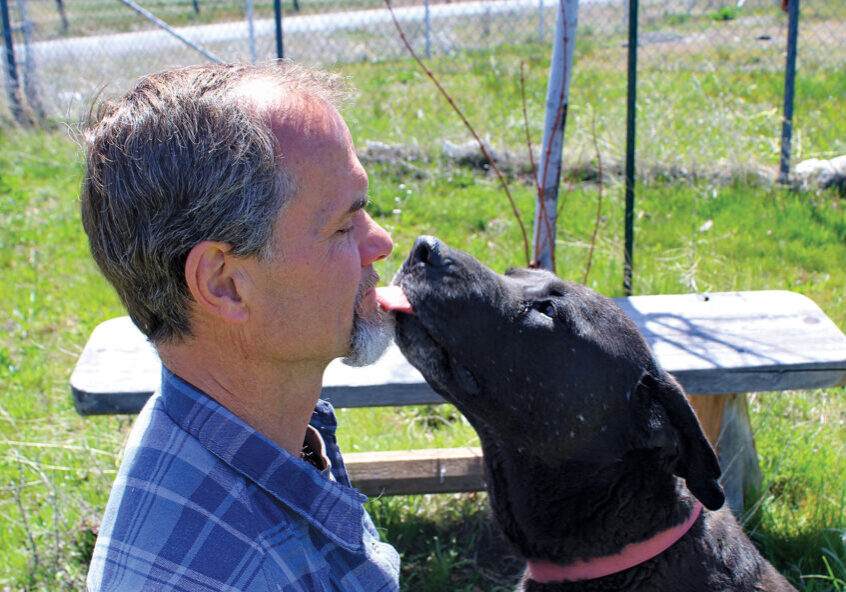
Rescue Ranch: Saving Dogs and Changing Lives
If you, like me, are a dog lover, you’ll want to know about the Siskiyou County no-kill dog shelter and sanctuary, Rescue Ranch. I recently spent a morning at the […]
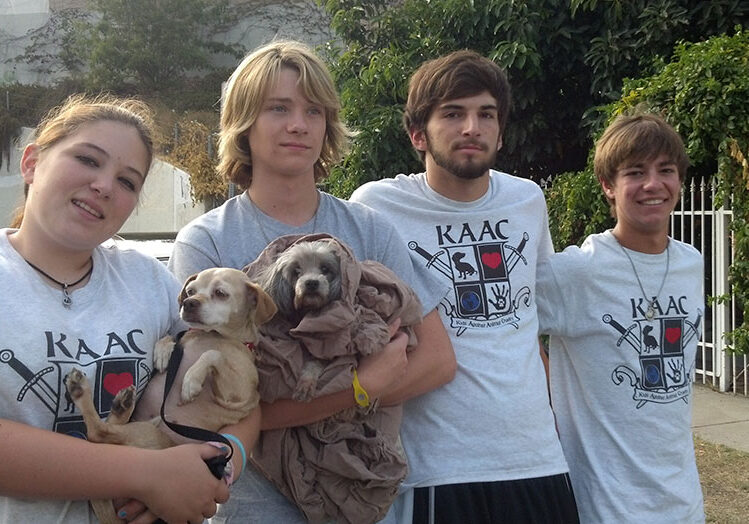
Lou Wegner: Kids Against Animal Cruelty
18-year-old actor and activist Lou Wegner is the founder of the national movement Kids Against Animal Cruelty. He currently lives and works in Southern California. NSP: What you are most […]
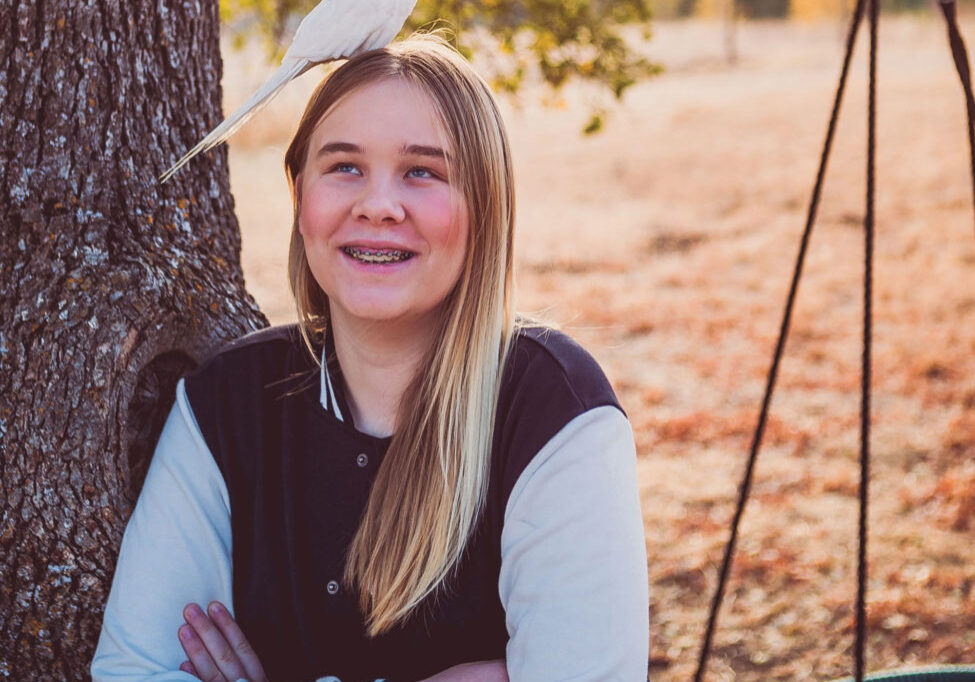
What To Know About Keeping a Pet Bird
Thinking of getting that cute little pair of parakeets for Christmas? Yearning to have a pet parrot that greets you when you get home? According to Born Free, a leading […]
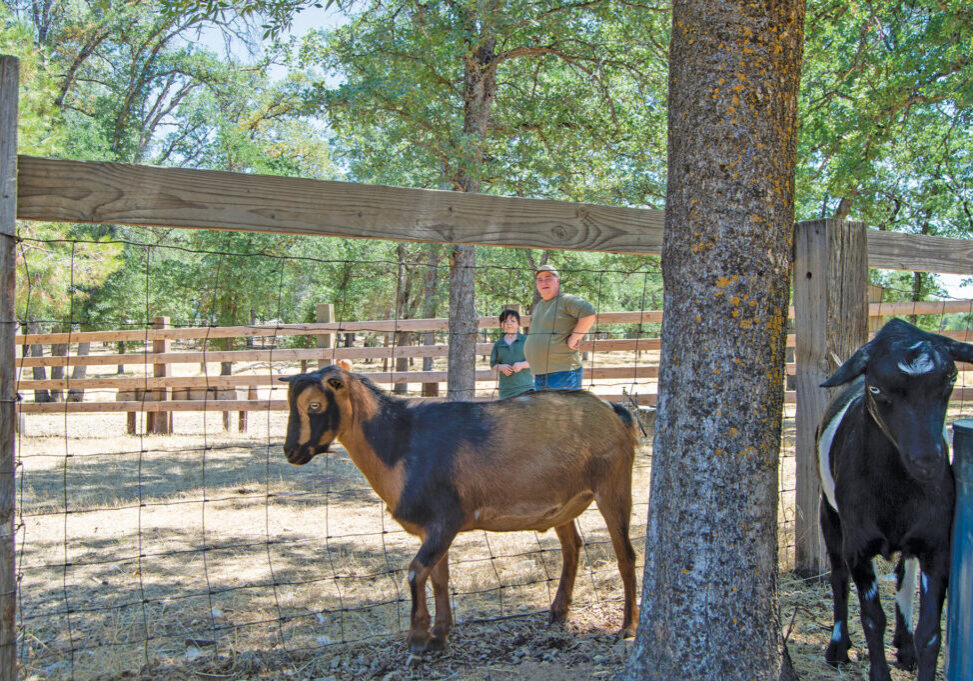
Children and Adults Find Healing and Connection at Roughout Ranch
“Everyone wants to be heard and to belong,” says Kathy Rutan-Sprague, Program Director at Roughout Ranch, nestled on 15 acres in the foothills just outside Redding. Here, children aged 2 […]

